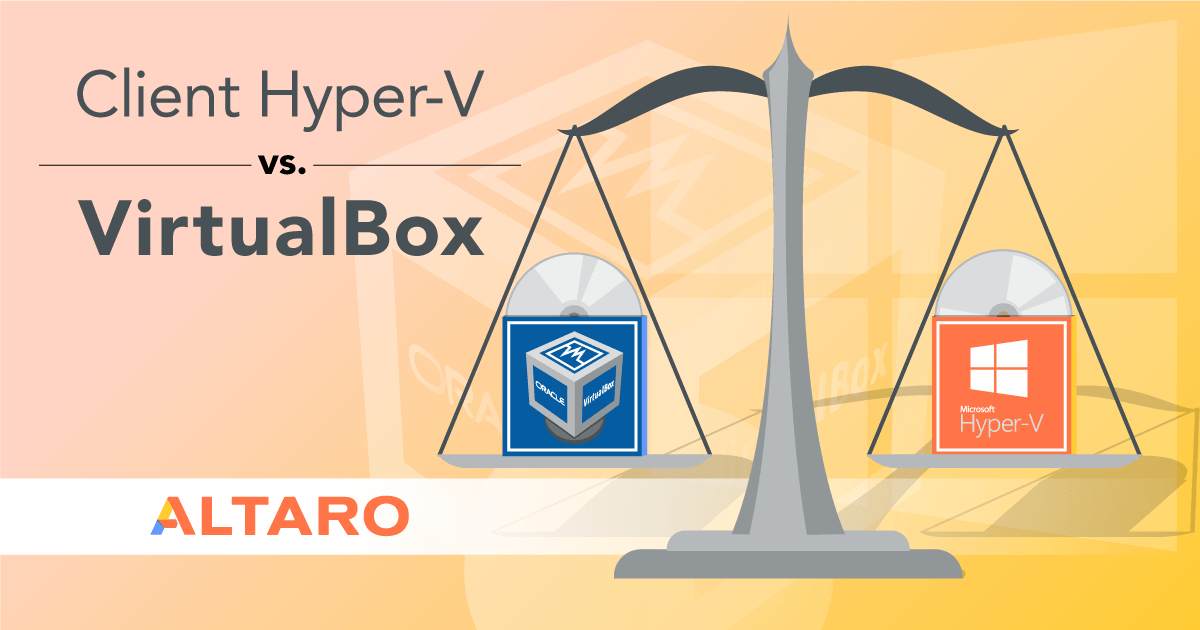
- Vm performance vmware vs virtualbox vs hyper v install#
- Vm performance vmware vs virtualbox vs hyper v drivers#
- Vm performance vmware vs virtualbox vs hyper v software#
- Vm performance vmware vs virtualbox vs hyper v code#
The user also launches VirtualBox, and then starts the necessary virtual machines. VirtualBox can be started and closed by the user on demand. VirtualBox is a type 2 hypervisor, which runs on the operating system and is installed on the host.

Hyper-V is always on when the host is on. Hyper-V then automatically launches the management operating system (or you can do it manually), which can be Hyper-V Server, Windows, or Windows Server. Hyper-V hypervisor management comes from the BIOS or UEFI. Hyper-V is a type 1 hypervisor, which runs on computer hardware.
Vm performance vmware vs virtualbox vs hyper v software#
In general, the hypervisor is a software solution you use so that one or several virtual machines are launched with their own operating systems (guest operating systems) on the host machine. Hyper-V and VirtualBox are different types of hypervisors. In fact, malware analysis is a niche where desktop VMs are particularly favored because of the safety they provide: A VM that is infected will isolate the infection from the underlying host.Hyper-V vs VirtualBox: what’s the difference? Likewise, I use a VM when visiting potentially dangerous sites where the possibility of viral infection is higher. I have a VM that I use only for browsing to sites where security is a paramount concern: banking and other activities where malware would be particularly damaging. For example, I go through a VM when I want to be safe on the Web. In addition, any user errors in the VMs will have no lasting effects on their host desktops and notebooks. Not only do you save time, there is an assured uniformity of student experience.
Vm performance vmware vs virtualbox vs hyper v install#
If you’re going to train a large group of people on a piece of software, rather than have them download and install the software (and waste class time solving one-off installation issues), you can have attendees download the VM with the software already installed.

The ability to take snapshots of running environments neatly solves the “unable to duplicate the bug” issue. In the event a defect is discovered, test engineers can take a snapshot of the VM, which they can then make available to the developers for remediation. Likewise, QA teams can test software in a VM that duplicates user or employee environments.
Vm performance vmware vs virtualbox vs hyper v code#
By running desktop VMs, developers can test code locally for portability before it’s checked into the source code management system. Testing for portability was the original scenario that made desktop virtualization popular, and it remains one of the core uses.
Vm performance vmware vs virtualbox vs hyper v drivers#
In IT, however, testing is one of the main drivers for adoption. (The top products for running Windows on the Mac are VMware Fusion and Parallels Desktop for the Mac.) This is especially common on Macs in order to run software designed for Microsoft Windows - that is, desktop apps and games that haven’t been ported to the Mac. Most visible to the average consumer is the ability to run a different operating system on your local machine. The use cases for desktop virtualization are numerous and important. Here I compare the two leading products in this category: VMware Workstation and Oracle VirtualBox.

While most of the impact has been felt in the data center and in the cloud, virtualization has also transformed IT work on the desktop, where it retains an important role. Few technologies have had a greater impact on business efficiency and IT productivity than virtualization.


 0 kommentar(er)
0 kommentar(er)
